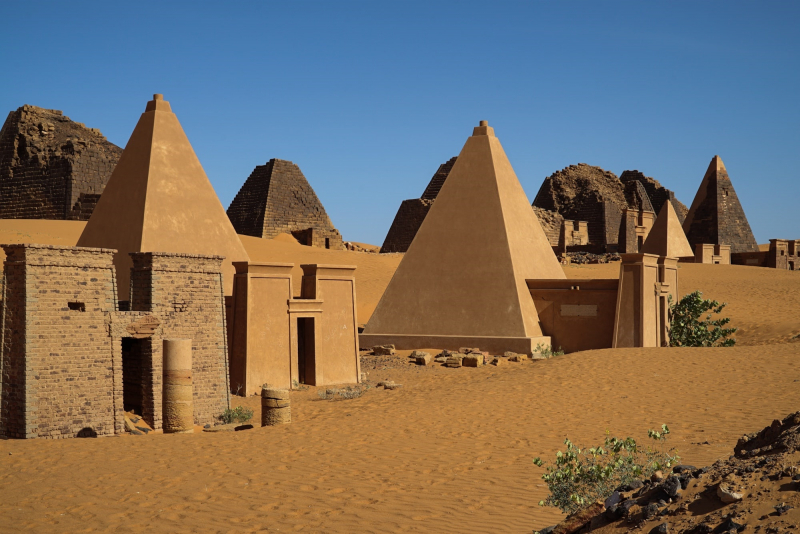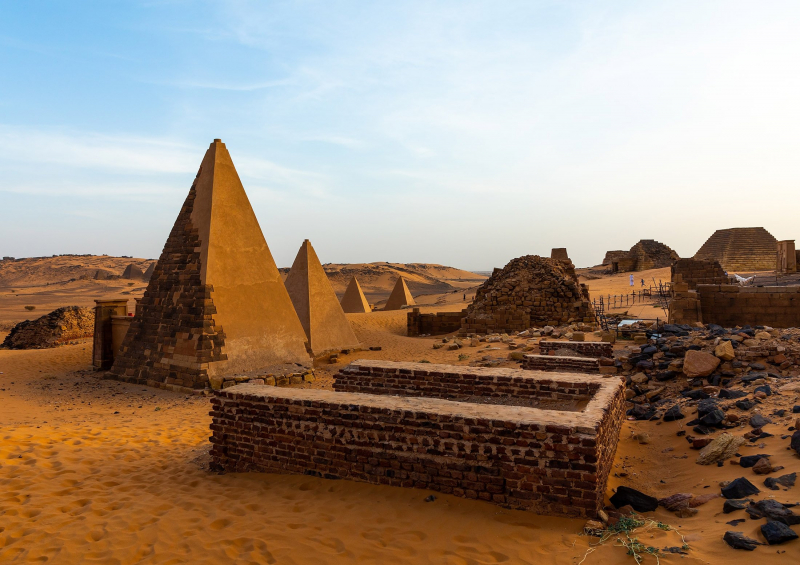Nubian pyramids
The rulers of the ancient Kushite kingdoms built the Nubian pyramids. During antiquity, three Kushite kingdoms ruled over the Nile valley region known as Nubia, which is located in the northwestern part of modern-day Sudan. Kerma (2500–1500 BCE) was the first civilization's capital. Napata (1000-300 BCE) was the focus of the second. Mero was the center of the third kingdom (300 BCE-AD 300). Granite and sandstone were used to construct the pyramids.
Nubian rulers, heavily influenced by the Egyptians, erected their own pyramids thousands of years after Egyptian burial practices had evolved. Pyramids were created for the first time in Nubia at El Kurrn in 751 BC. The Nubian-style pyramids were modeled after a type of Egyptian private elite family pyramid popular in the New Kingdom. There are twice as many Nubian pyramids as Egyptian pyramids still standing today. In the 1830s, an Italian treasure hunter named Giuseppe Ferlini partially toppled forty of the pyramids. As one of the most beautiful historical sites in Sudan, the Nubian pyramids have been recognized as a World Heritage Site by UNESCO.
The Nubian pyramids were constructed over a few hundred years to serve as graves for the kings and queens of Napata and Mero, as well as wealthy inhabitants. The first three locations are in Lower Nubia, near the contemporary town of Karima, near Napata.
The first of these, which included the graves of King Kashta and his son Piye, as well as Piye's successors Shabaka, Shabataka, and Tanwetamani, was built at the site of El-Kurru. For their queens, fourteen pyramids were built, with several of them being famed warrior queens. This is in comparison to the approximately 120 much larger pyramids that were built in Ancient Egypt over a 3000-year period.
At Nuri, you may see the pyramids of Nubian rulers Aspelta, Aramatle-qo, and Amaninatakilebte. Later, the Napatan pyramids were built at Nuri, on the opposite bank of the Nile, 10 kilometers (6.2 miles) north. Anlami and Aspelta were among the 21 kings and 52 queens and princes buried in this necropolis. These kings' remains were entombed in massive granite sarcophagi. Aspelta's weighed 15.5 tons and had a four-ton cover. The Napatan king and Twenty-fifth Dynasty pharaoh Taharqa's pyramid is the oldest and largest in Nuri.
Location: Sudan








